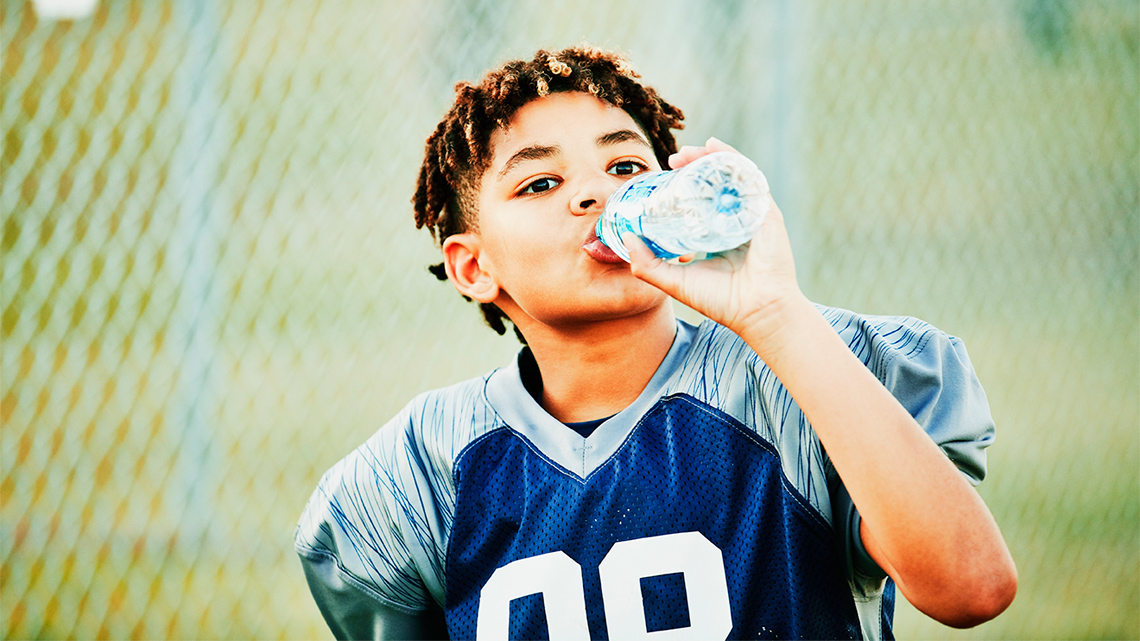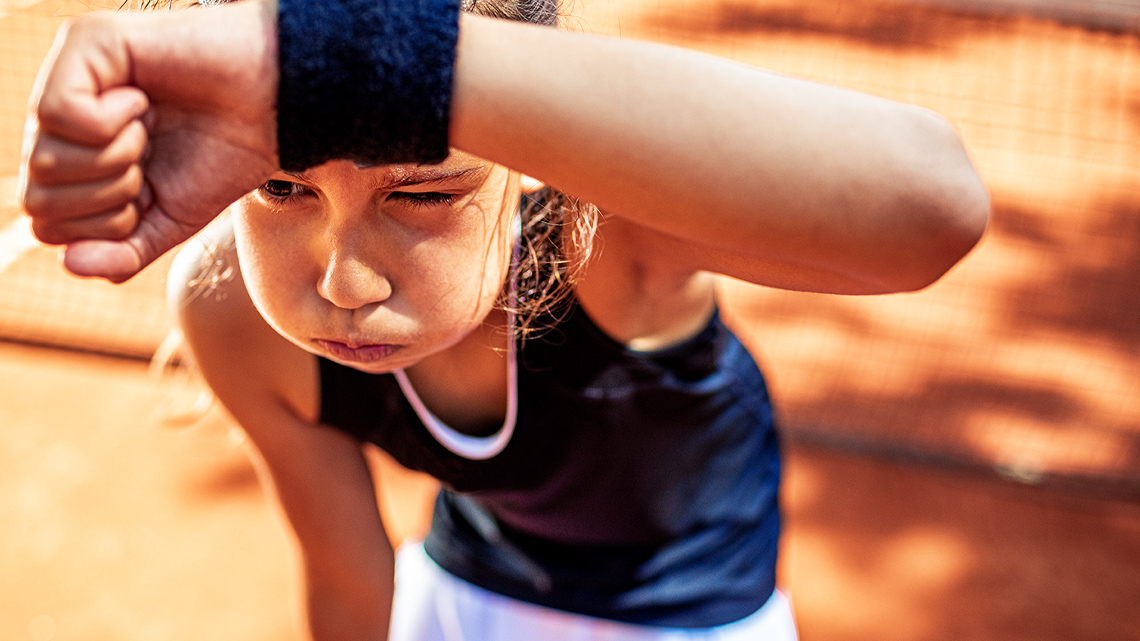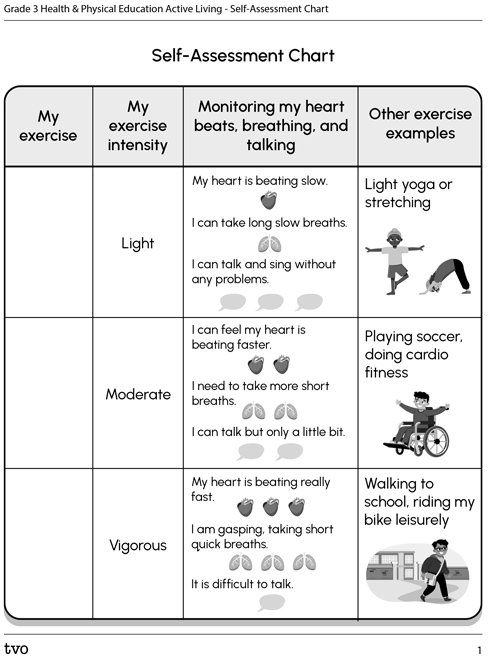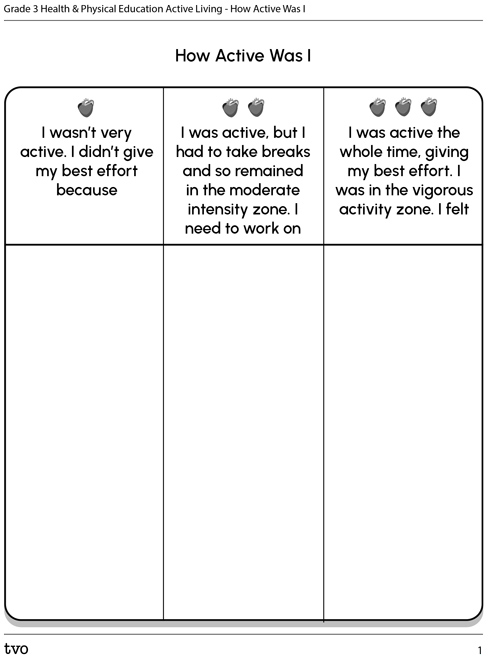Minds On
Let’s get started!
Let’s do a warmup! You can warm up with different activities that you enjoy.


Performing a warm up before any physical activity:
- increases flexibility
- lowers the risk of injury
- increases your range of motion
- makes you feel good
Safety
Before you begin:
Warm Up
Warm up
Access this video entitled “Power Up” and follow along for the activities that you are able to perform for a quick full-body warm-up. Be sure to adjust any of the activities if you need.
Now that you have finished your warm-up, what are some signs that your body is showing of having participated in physical activity?
Complete My Body’s Signs in your notebook or using the following fillable and printable document. If you would like, you can use speech-to-text or audio recording tools to record your thoughts.
| Notice and observe | What is happening? Describe your body’s signs. |
|---|---|
|
Put your hand on your heart. |
|
|
Put your hand on your forehead. |
|
|
Notice your breathing. |
|
|
What else do you feel? |
Press the ‘Activity’ button to access the My Body’s Signs.
Student Success
Think-Pair-Share
If possible, share your document with your partner. Are their signs the same as yours?
Note to teachers: See your teacher guide for collaboration tools, ideas and suggestions.
Explore the images of some of the signs of having participated in physical activity.
Cool Down
Cool down
Ensure you cool down after exercising. This gives your muscles a chance to relax and allows your heart to get back to a resting heart rate.
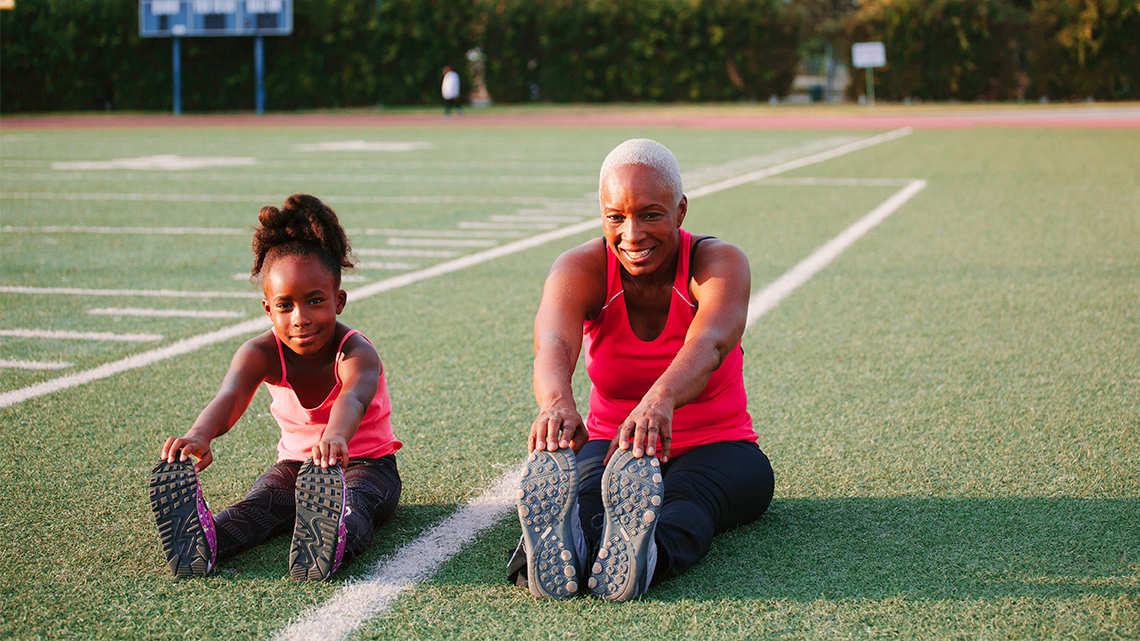
Action
Simple self-assessments
In the Minds On, you answered questions about how your body was behaving after some physical activity. This is called doing a self-assessment.
What is a self-assessment? Think about this and come up with your own definition.
Then, press ‘Answer’ to learn what self-assessment means.
A self-assessment means to be able to express how well you think you are doing at a task.
During physical activity it is important to self-assess to make sure you are being active at the right pace for you and that you are not doing too much for you.
We also self-assess after we are physically active so we can be sure that we are getting enough physical activity for our physical health. We can also self-assess to set goals to improve.
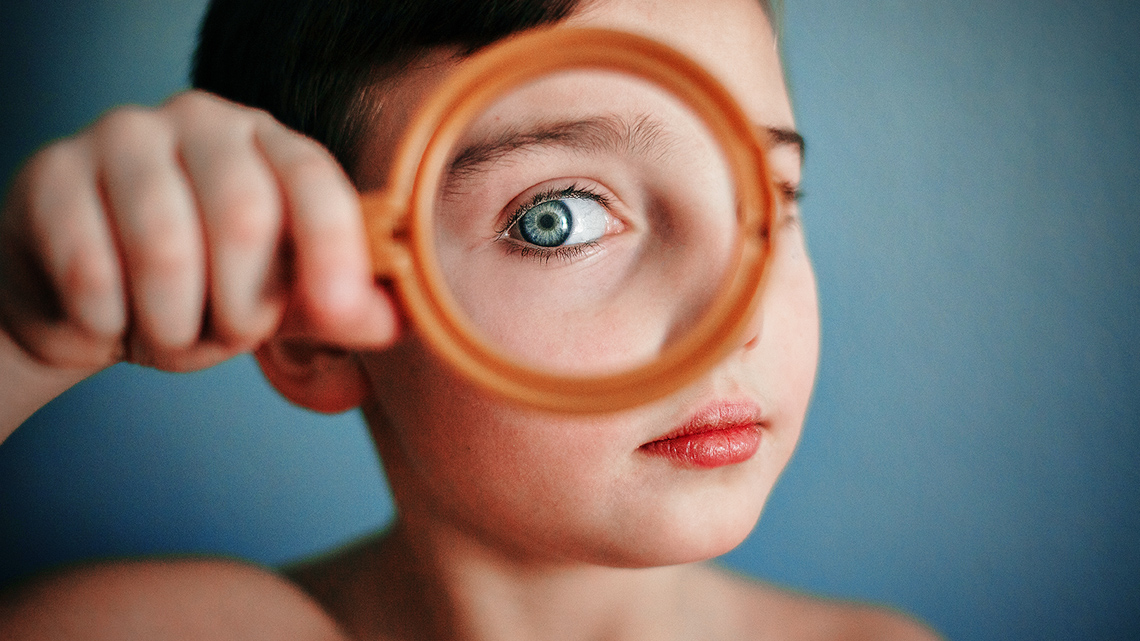
Take a few minutes to explore the chart and assess in which activity zone you are now. Complete the Self-Assessment Chart in your notebook or using the following fillable and printable document. If you would like, you can use speech-to-text or audio recording tools to record your thoughts.
| My exercise | My exercise intensity | Monitoring my heart beats, breathing, and talking | Other exercise examples |
|---|---|---|---|
|
Light |
My heart is beating slow. I can take long slow breaths. I can talk and sing without any problems. |
Stretching |
|
|
Moderate |
I can feel my heart is beating faster I need to take more short breaths. I can talk but only a little bit. |
Playing soccer, doing cardio fitness |
|
|
Vigorous |
My heart is beating really fast. I am gasping, taking short quick breaths. It is difficult to talk. |
Walking to school, riding my bike leisurely |
Press the ‘Activity’ button to access the Self-Assessment Chart.
Right now, since you have been resting for a few minutes, you should be in the light activity zone.
- Put your hand over your heart. It should be beating slow.
- Assess your breathing. You should be able to take long deep slow breaths.
- Assess your ability to talk. You should be able to talk and sing.
Physical activity challenge
Now it is time to try to complete another physical activity challenge.
Explore this video entitled “Power Up: Circus 3” and follow along to the best of your ability for a quick full-body warm-up. Be sure to adjust any of the activities if you need.
Congratulations on finishing your physical activity!
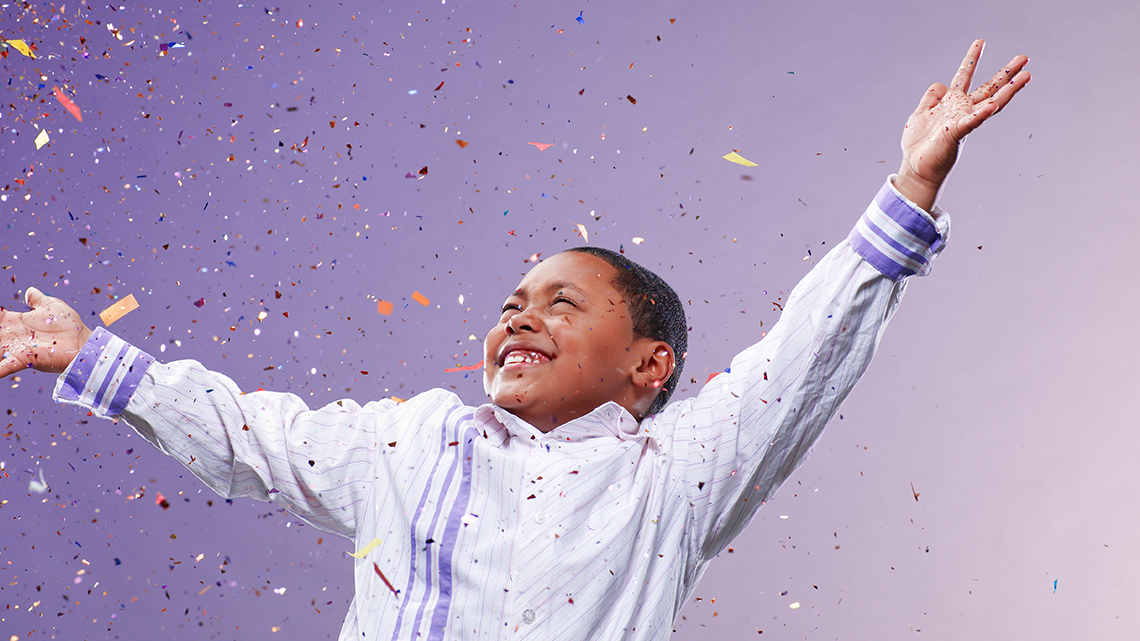
Now it is time to assess your effort. Use the Self-Assessment Checklist to assess your efforts and then complete the Self-Assessment Chart.
Self-Assessment Checklist
Complete the Self-Assessment Chart in your notebook or using the following fillable and printable document. If you would like, you can use speech-to-text or audio recording tools to record your thoughts.
Consolidation
Cooling down
Now it is time for you to cool down.
When you are feeling overwhelmed, or have finished a physical activity, stretching and deep breathing can help you to relax.
Access this video entitled “How do you Feel” to learn more about how deep breathing and stretching allows you to calm your mind and body.
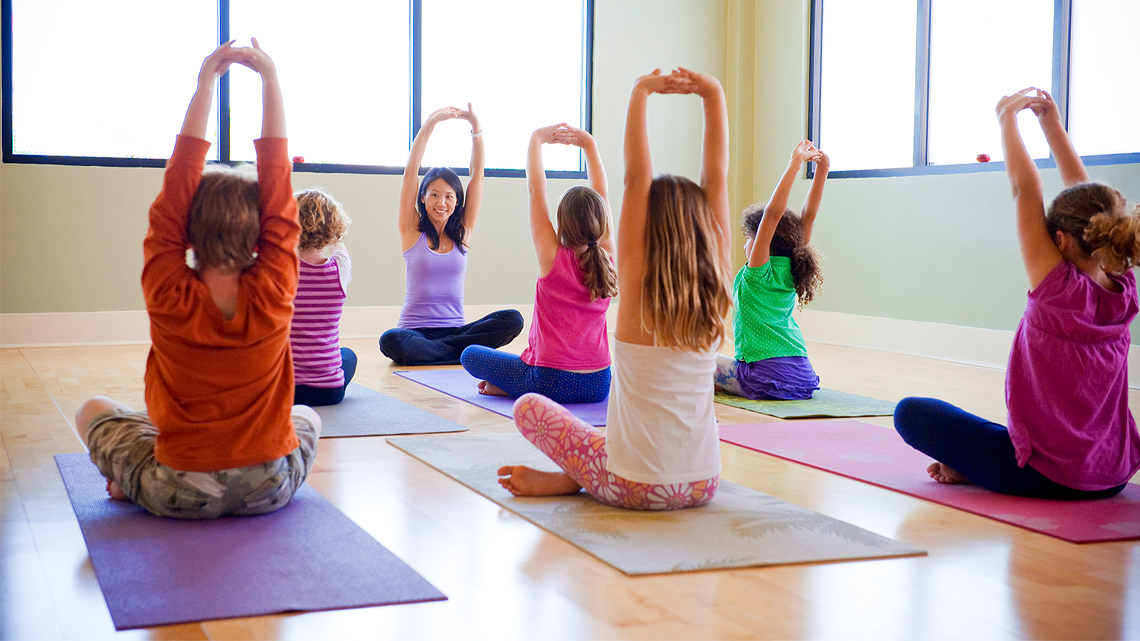
Please take some time to stretch, get a drink of water and do some deep breathing to slow down your heart rate. Complete the following self-assessment activity.
Complete the How Active Was I? in your notebook or using the following fillable and printable document. If you would like, you can use speech-to-text or audio recording tools to record your thoughts.
Reflection
How do you feel about what you have learned in this activity? Which of the next four sentences best matches how you are feeling about your learning? Press the button that is beside this sentence.
I feel...
Now, record your ideas about your feelings using a voice recorder, speech-to-text, or writing tool.
